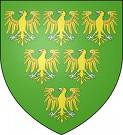All this coverage of the possible discovery of the bones of Richard III reminded me of a conversation I had with a guide about the mortuary chests in Winchester Cathedral. The chests contain the bones of the Anglo-Saxon kings, for example, Cnut, and possibly the bones of William Rufus. During the time of the Civil war, soldiers destroyed the tombs of the old kings, as well as smashing the stained glass windows and ruining the medieval carvings. The people of Winchester gathered up the bones, and placed them in mortuary chests, which are placed high up in the cathedral. Some say the bones of William Rufus are mixed in with them, but there is also a plaque which supposedly marks the place where he is buried. The chests are due to be opened - right now - and examinations/DNA work carried out on the bones. I managed to take a few pictures, but I'm afraid the light was not great.



The picture of the carvings shows the Victorians attempts to recreate the original medieval carvings. The stained glass windows were reconstructed by the townspeople shortly after they were smashed. Interestingly, the remains of King Alfred were buried in Winchester's old minster, and later moved to Hyde Abbey, and lost in the Reformation.
Winchester also contains the shrine of St Swithun, whose remains were also dug up and discarded. All this makes me wonder how on earth Piers Gaveston's father's tomb remained intact!
Winchester Cathedral also contains the grave of the novelist Jane Austen, who died whilst visiting Winchester.












